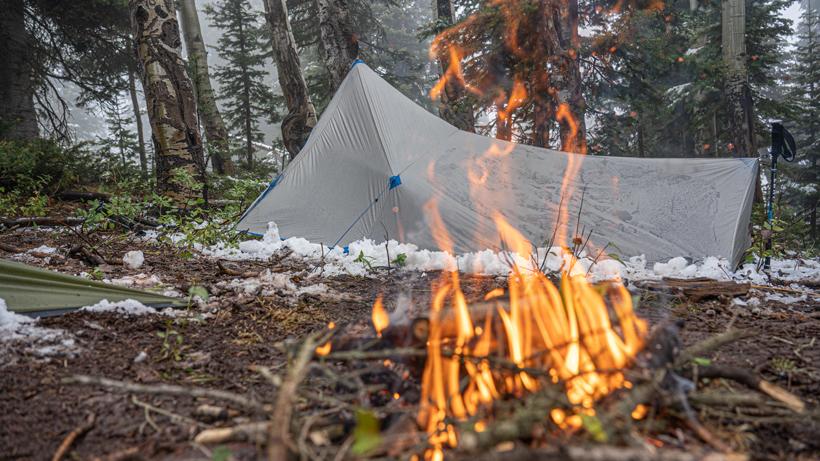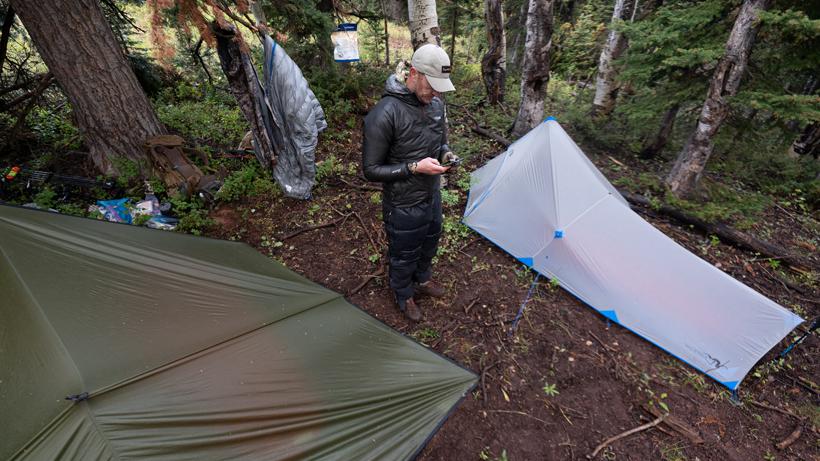






Most of the 2019 hunting seasons are in our rearview mirrors. I had a very diverse hunting schedule this year: chasing antelope in the Nevada desert, bugling bulls in western Wyoming, stalking Alaskan OTC moose and I drew a tag in Utah for Rocky Mountain goat and, finally, hunting whitetail deer in Wisconsin. I had the opportunity to hunt with good friends and family and spend a substantial amount of time in some of the West’s most enticing terrain. It was physically and mentally demanding, but it was also one of the most satisfying and memorable hunting seasons of my life. I feel extremely lucky for those experiences.
Chances favor those who are prepared. Many of us in the office are already looking ahead to the 2020 application season and planning our schedules for next fall. One aspect of planning my upcoming year is considering my objectives for next fall. In this article, I plan to explore some of my goals and give you some ideas as well. I also want to dive into some of the steps along the way that will help me achieve my goals.
The first step in my process every year is to open up a spreadsheet that I have maintained for years and review the number of points I have, the states I applied in, and the species I applied for. I will go through, state by state, and update my points as well as review the individual hunts I applied for. If you are not maintaining a spreadsheet with your application and point details, I would highly encourage you to start. I maintain a tab/sheet for each year and I can go back through the years to see what hunts I applied for. This has been really helpful to me to determine what to apply for.
Applying in the West is expensive and it seems to be getting more expensive every year. Most of us do not have an unlimited amount of money to apply. If you do, I would encourage you to apply for any and all species. If you don’t, there are some general strategies I use.
Before I plan my application strategy, the amount of time I can take off from work needs to be considered. How many days do you have off to hunt? What hunts are most important to you? Do you have co-workers that you need to work with to make sure you are covered before you apply? All of these are worth considering before you plan to apply. In addition, there are hunts that I think can be piecemealed together and you can sneak a few of those in without missing work. For me, antelope hunts can often be quick weekend trips. I often apply for and try to hunt areas close to my house, which also give me the chance to get a mule deer or an over-the-counter (OTC) elk hunt in on the weekends.
I’ve been applying in several western states for a variety of species and, even still in most cases, I do not have enough points to draw top tier permits. The majority of you reading this are in the same boat, so it’s important to be realistic in your expectations.
For bison, moose, bighorn sheep and mountain goat, my reality is that I don’t have the points to feasibly draw a tag so already I know that, for those species, I am really only concerned with draw odds and my application budget (more on that later). My applications for those species are actually quite easy. I apply for areas with better odds.
The bulk of all of our hunting each fall is going to be for deer, elk and antelope. Within that, there are both opportunity type hunts and trophy type hunts. For example, with elk I know that my opportunity type states are Colorado, Idaho, Montana and, perhaps, Wyoming or Oregon. Trophy types are going to be Utah, Nevada, New Mexico and Arizona—although if you are creative, there are some easier to draw hunts in Arizona and, even, New Mexico. In the trophy states, I take more of a swing for the fences approach and I use an opportunity like Idaho or Colorado as a backup in case I have no other options. With a little planning, Montana and Wyoming are also relatively easy options to pick up a permit. You do have to plan ahead though.
People have all kinds of reasons that they hunt and, in my opinion, one isn’t better than the other as long as it’s done legally and ethically. Some people hunt for meat, some people hunt for trophies, some people hunt for the experience and adventure and probably all of us hunt for a combination of those. For me, I appreciate the satisfaction I feel from finding and matching wits with bigger bucks and bulls. The score is not the driving force; rather, it’s the challenge of finding, hunting and taking a buck or bull of that caliber, which is relatively rare. I like the challenge that lies within that. However, I think it’s important to make a couple points that relate to that type of hunting.
1. Multiple hunts each fall are fun, but it doesn’t often equate to killing trophy animals. It’s incredibly difficult to scout for four or five different hunts in different states. Not scouting is fine, but if you do not scout, your expectations should reflect that. The amount of time spent scouting almost always shows up in the quality and success of the hunt.
2. If you want to hunt a big buck or bull, focus on obtaining permits where that caliber might exist. Certainly, there are areas like the San Jaun or Boulder in Utah or units like 2 or 201 in Colorado, but the reality is that I will never draw those tags. Rather, I need to find areas that I can draw or hunt OTC where that caliber exists.
A buck or bull needs a few things to grow a large set of antlers: quality feed, genetics and, most importantly, age. Feed and genetics are out of my control, so hunting areas with bucks or bulls that can reach an older age class is where I put my focus. In order for a buck or bull to get that old in an OTC or easy to draw area, it needs refuge. Refuge in these areas is obtainable in a few ways: remote and rough roadless terrain, private property, or a limiting factor like grizzly bears or wolves that might limit hunting pressure. Using my Insider account and Filtering, I have been using the “odds filter,” then “select season” filter, and, finally, the “trophy potential” filter. Then, I’m reviewing the individual unit profiles looking for things like terrain, land ownership and access descriptions. Within those, I’m finding possible areas to focus my time and attention.
If trophy hunting is your thing, my advice would be to limit your hunts to just a few a year and focus on getting permits in areas that can produce a trophy animal. Then, use all of your time to scout and hunt that area.
If your strategy is to fill the freezer, use the draw odds, select season, harvest success and, perhaps, the public land filters to find hunts that meet that objective. An antlerless hunt is a great way to fill the freezer and we provide draw odds for all antlerless and female species hunts.
There are several other types of objectives — all of which you can use your INSIDER research platform to help you achieve. If you want to get your kids out, we have application strategy articles specific to youth. We also cover odds for states that offer youth only permits. Antlerless elk, antelope and deer are great hunts to get kids started into hunting. If you are looking for an adventure hunt, we just launched Alaska as part of our platform. There are many opportunities to get permits OTC for species like black bear, blacktailed deer, caribou and moose. For roughly under $5,000 for a hunt in Alaska, you can use the platform to find, plan, and go on an adventure hunt of a lifetime.
A great starting point is jumping into our Filtering 2.0 and Draw Odds pages. You can click through to those areas through the buttons below.
The following are pretty standard for goal setting whether it’s physical fitness or application and hunting, but they are still valid. Set goals that motivate you. Your goals should be specific, measurable, attainable and have a deadline. After you’ve set your goals, find the application or permit opportunities that can help you achieve your goals. Lastly, one of the best traits of successful hunters is that they are good goal setters and planners. Set goals and put real time and effort into planning.
In states where you have to buy a hunting license to apply, apply for every species that you are interested in. For example, if you wish to apply in Utah as a nonresident, you must purchase the $65 hunting license. Another $10 per species will allow you to apply for all of them.
Weigh your odds of drawing against the cost of applying to see it it’s worth it. For example, Wyoming requires you to front the cost of a bighorn sheep permit and you must participate in the point system if you apply. For a nonresident with less than 18 points, there are only five units that offer a random tag and the odds for those are all less than 1%. That means you would float $2,335 on your credit card if you didn’t draw. Then, you would receive a refund for $2,170. It would cost you $165 for a less than 1% chance to draw. To me, it’s not worth it, but it may be to you. However, for every application, you should be thinking about the cost versus the odds of ever drawing.
Do I need more credit on the card? Several states require you to cover the costs of the licenses you apply for. For example, New Mexico requires you to buy a $65 hunting license to apply, but, after that, you can apply for all species as long as you front the cost of the permits. If you are unsuccessful, you get a refund. If you applied for elk, deer, antelope, bighorn sheep, ibex, oryx and barbary sheep, you could be floating $8,216 in permit fees. Your refund would include that entire amount minus $156 in application/license fees. Many states also charge the card you used if you are successful. If your card is declined, they move onto the next application. Make sure you have a plan to have the credit you need to apply and that your cards are valid.
Where is your biggest bang for your buck? Generally, Nevada permits are tough to draw if you only apply for the best hunts. Consider if it’s worth the $155 annual license to apply. The same goes for Idaho, which has no point system; is it worth the cost of the $154.75 hunting license to apply? Do some research and apply where it makes sense for your budget. For me, Colorado, Utah, Wyoming, New Mexico, and Arizona always make the list. They may not be yours, but you should consider the pros and cons of each system to see if it makes sense for you.
Lastly, set a budget to apply and a permit budget. Find the opportunities that make sense and stick to it.